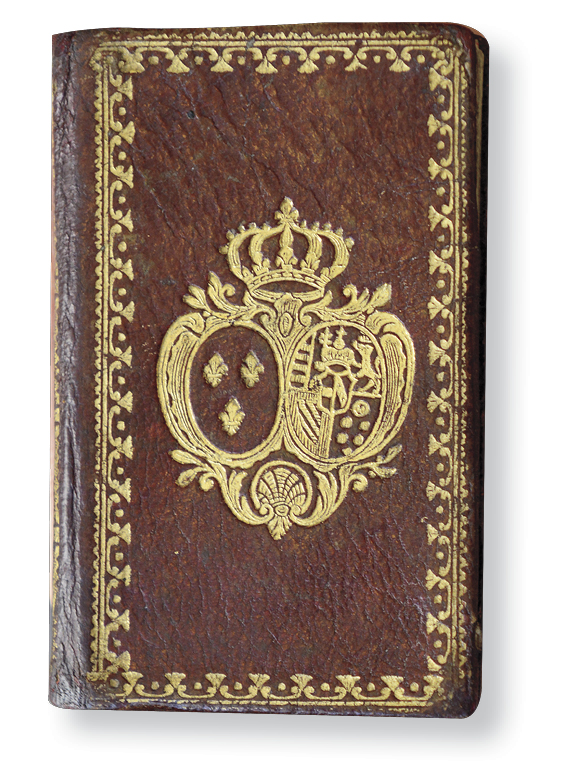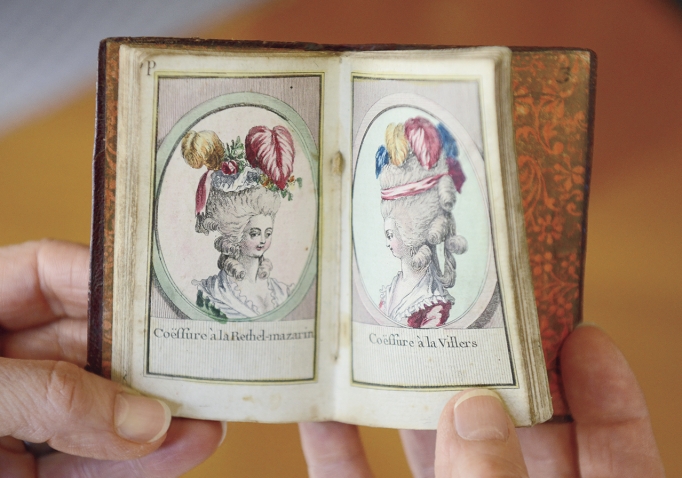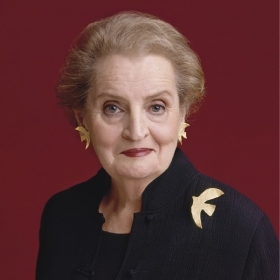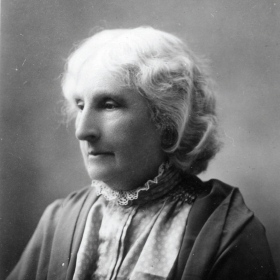
Special Collections librarian Ruth Rogers recently went to the New York Book Fair and scored big. She beams as she holds out a small book bound in red Morocco leather. On the cover is imprinted a coat of arms—which includes a crown and three fleurs-de-lis.
“Imagine if we could do a DNA test on this. Maybe there’s some hair in here,” she says with a laugh.
Rogers’ treasure is a lady’s almanac published in Paris around 1780, the period just before the French Revolution. The coat of arms on the cover? It belonged to Marie Antoinette, as did the little book. “Only the queen’s binder would have access to her stamp. So this was bound for her,” Rogers says. “This almanac seems very rare, and there is no other known copy with her coat of arms.” The purchase, one of three French almanacs now in the collection, was funded by Lia Gelin Poorvu ’56, a longtime French professor at the university level.
Inside, along with a calendar, are hand-painted engravings of the latest over-the-top hairdos circa 1780, songs and poetry, and a place for a lady of a certain class to record her gains and losses at the gaming table. “All the excesses of the Ancien Régime are evident in books like this—the excesses of the hairdos, the pearls, the feathers, the poufferie,” Rogers says. She points out the names of the towering coifs—there’s the one named after a Babylonian queen and a coiffure à la belle saison (lots of flowers are to be worn for that beautiful season).
“An almanac like this is a real piece of material history, because we have much more than text here,” says Rogers. “It was advertising how you should look, what you could do to be fashionable in Paris before the revolution.” Rogers also recently purchased an almanac printed after the revolution. The month names are different, and hair and dress styles have changed. There are many lessons for students to mine as they work with these books.
“I’ve been collecting rare books and artists’ books for over 20 years,” Rogers says. “I have a feel now for what is unusual, what could be used in teaching, what connects to the curriculum.” She looks up and smiles. “Don’t I have a great job?”








We ask that those who engage in Wellesley magazine's online community act with honesty, integrity, and respect. (Remember the honor code, alums?) We reserve the right to remove comments by impersonators or comments that are not civil and relevant to the subject at hand. By posting here, you are permitting Wellesley magazine to edit and republish your comment in all media. Please remember that all posts are public.